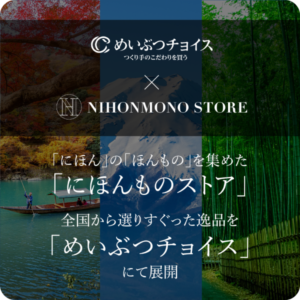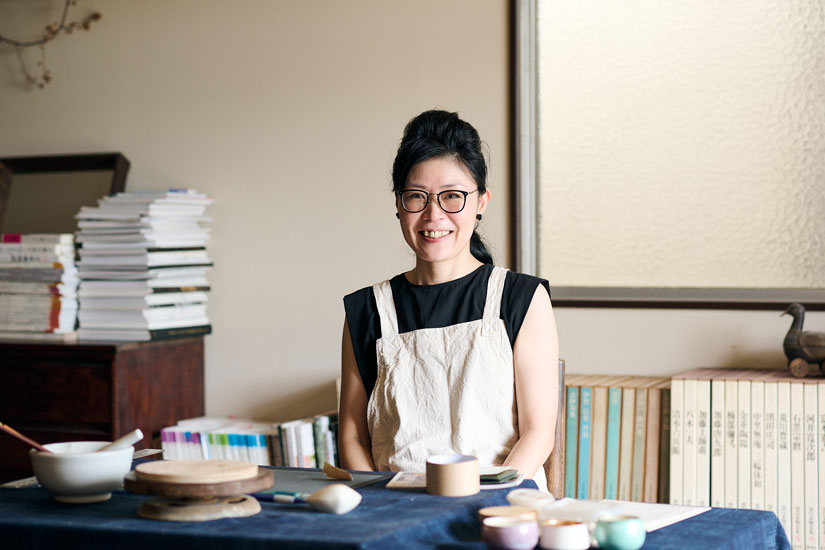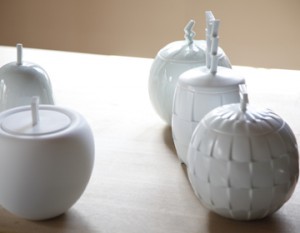Tomoko Takahashi has established her own unique gold and silver painting technique, in which thick foil called “uwazumi” is burned onto white porcelain. The beauty of her work is always imbued with respect for the indigenous culture she has come into contact with and a warm attitude toward the local people.
Aiming for Harmony of Gold and Silver Colors and White Porcelain
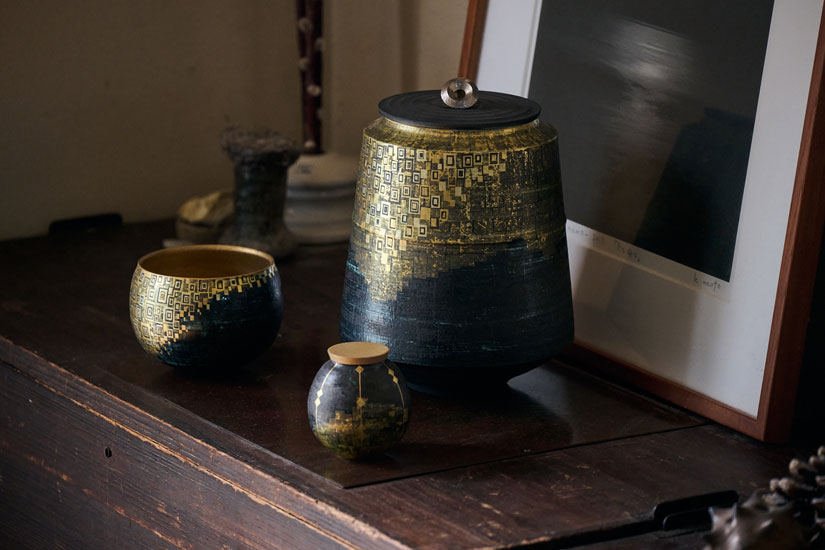
Tomoko Takahashi is a ceramic artist known for her “gold and silver painting” technique, in which gold or silver, which is thicker than foil, is pasted on top of overglaze painting on the surface of white porcelain and fired. The glitter of gold and silver on the delicate geometric patterns is like moonlight with a hint of dimness and somewhat exoticism.
Takahashi’s workshop is located in Yachimata City, famous for peanut production, in the center of Chiba Prefecture.
Using a wide variety of supernatants and metal foils
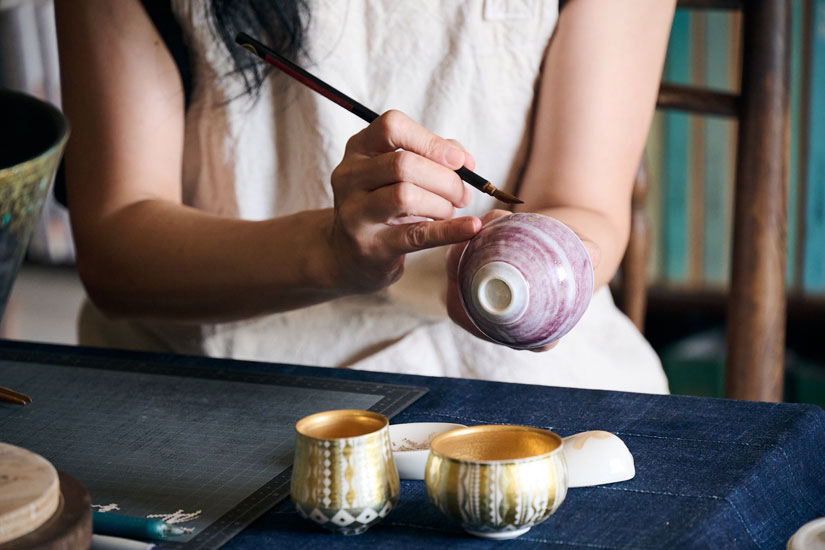
Takahashi’s gold and silver overglaze painting is done by adding colors with overglaze pigments on top of white porcelain (porcelain with a transparent glaze on a white base) formed by roiro (roiro) molding and then applying gold or silver overglaze. The most characteristic material in this technique is called kamiicho.
For example, gold is 10 to 13 times thicker than gold leaf. Gold foil will burn away during the firing process, but there is no need to worry about this with jochin. However, even though it is thicker than gold leaf, it is only about 0.001 mm. It is still difficult to handle. The process of cutting out, gluing, and attaching each piece of jasumi is a tedious and time-consuming process.
There are many variations of hosho, each with its own unique color tone and vibrancy. In addition to using different types of jochi, Takahashi sometimes incorporates metal foils other than gold and silver into his work. Copper foil, for example, “is interesting because it sometimes turns black or slightly greenish due to the reaction with the glaze,” he says. The abundance of techniques he has developed is the basis for the variety of his works.
Firing warm white porcelain that harmonizes with gold and silver
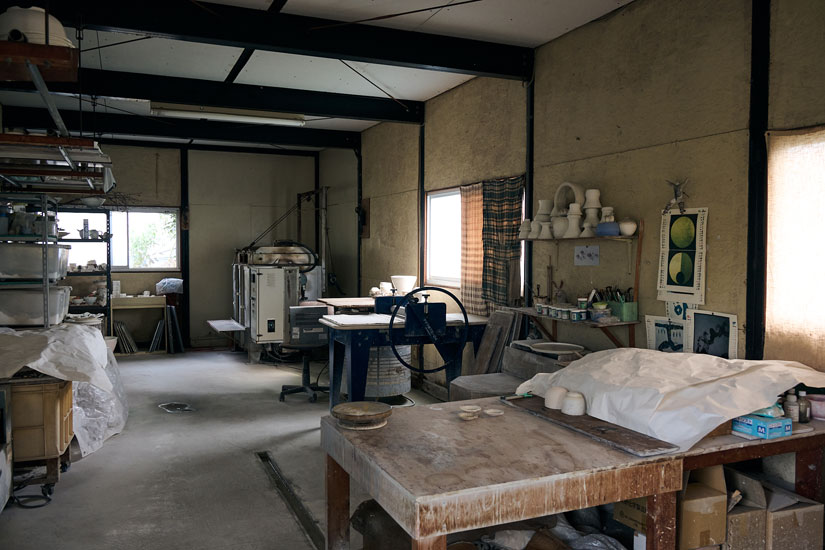
Once the overglaze enameling is finished, the porcelain is fired at 700 to 800 degrees Celsius, which is lower than the firing temperature for overglaze enameling.
The firing of porcelain is roughly classified into two types: reduction firing, in which the oxygen supply to the kiln is limited, and oxidation firing, in which oxygen is supplied to the kiln. He says, “Reduction firing produces a white with a hard texture and bluish tint, but in the atmosphere of white porcelain, I think the presence of gold and silver would blend better with the softer tints. It is only through such harmony between white porcelain and jochin that the gold and silver shine with dignity and depth.
How Takahashi’s unique gold and silver coloring is created
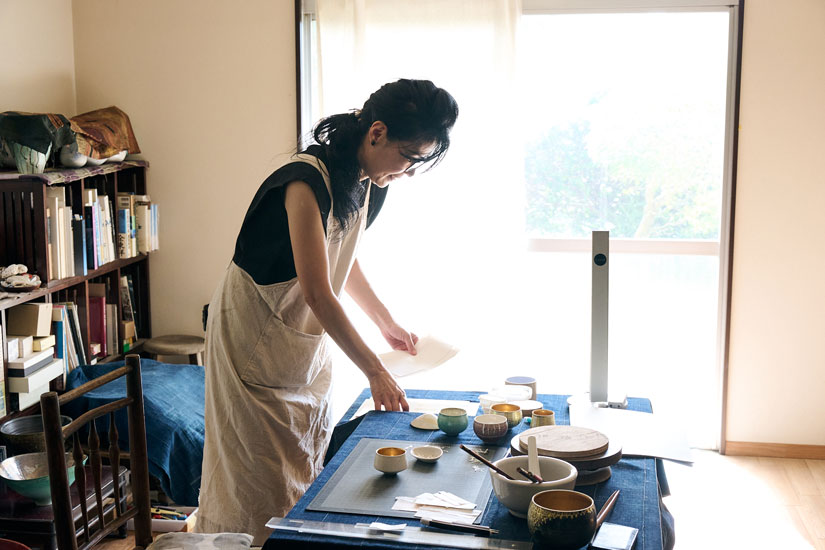
Takahashi’s gold and silver paintings are lined with neat geometric patterns. Having seen many cultures of different lands, I feel a sense of mystery and happiness in geometric patterns that convey religious thoughts and beliefs through abstract expressions rather than figurative ones,” says Takahashi. We would like to trace the background of Takahashi’s craftsmanship up to the present.
Finding the beauty of foil in indigenous culture
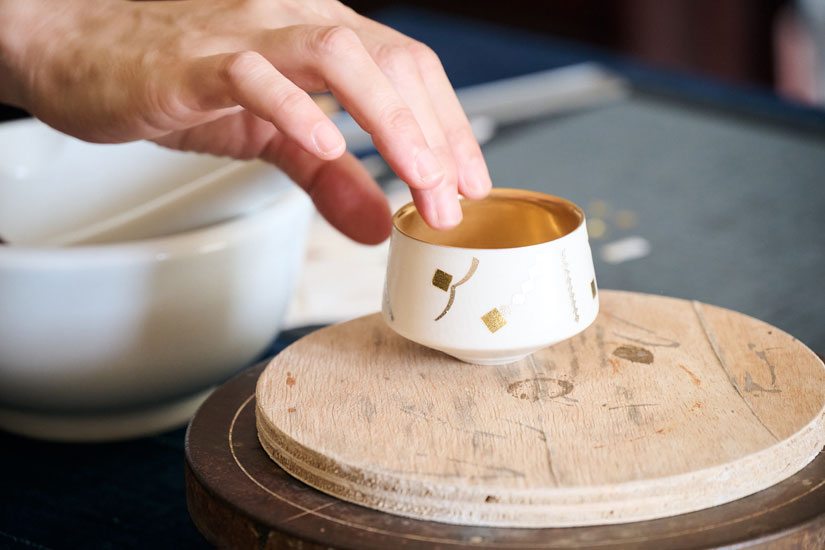
Takahashi became seriously involved in ceramics after entering the Okinawa Prefectural University of Arts. He recalls that his interest in ceramics became stronger when he was able to “experience the primitive process of pottery making” in a class at the university, which began with digging out the earth to make earthenware.
Rather than originally being interested in ceramics, Takahashi’s motivation for going to Okinawa was that he was “interested in the Okinawan culture itself. It was this focus on indigenous culture that has influenced Takahashi’s style to this day, but a particularly significant turning point came during a visit to Myanmar when he was a university student.
One of the most significant turning points for him came when he was a university student in Myanmar, where local people were praying to a statue of Buddha enshrined in a temple by attaching certain objects to it one after another. The thing they were attaching was a piece of foil. I was very moved by the way these people, who may not be economically rich, went out of their way to buy the foil and pray. I was very moved by the sight of these people. It wasn’t that the foil was beautiful or anything like that, but the sight was so beautiful that I was irresistibly drawn to it. I took home a bunch of small gold leaf, which at the time cost less than 1,000 yen, and treasured it.
Encounter with Fujio Kitade
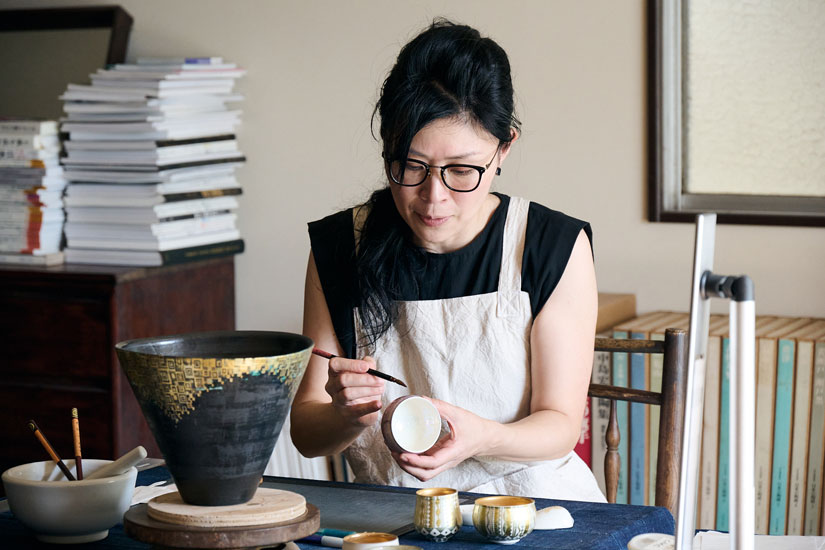
During his university years, Takahashi had another major encounter. This was Mr. Fujio Kitade, who came to Okinawa Prefectural University of Arts as a part-time lecturer. At the time, he was the president of Kanazawa College of Art.
The encounter with Mr. Kitade not only taught him the basics of overglaze painting, but also gave him many opportunities that led him to his current work, including an introduction to an employee of the Kutani Yaki Technical Research Institute who taught him the principles of underglaze gold painting and a foil shop where he could purchase overglaze (thick) foil. It was the moment when the important mental images painted in Myanmar and the technique of “foil” were connected as one.
Continuing on the path he believed in
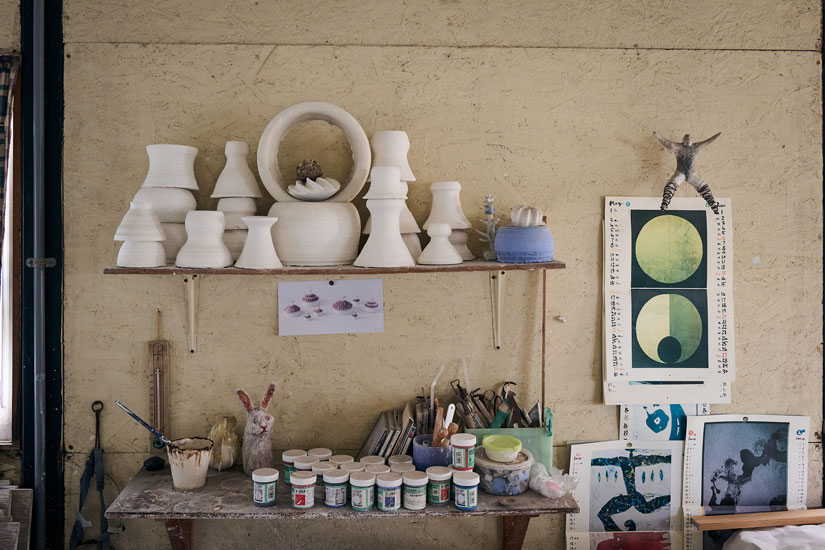
In 2001, Takahashi set up a studio in Yachimachi City, where he was related to his relatives, and continued to work on glazed underglaze gold leaf while working as an elementary school teacher. He held solo exhibitions and entered public competitions, but he fell into a slump, saying, “I felt that it was impossible to master something in this field when there were already great artists.
Eventually, he began to change his mind, gradually shifting to a unique approach, saying, “Let’s eliminate the glaze over the foil and compete with the beauty of the gold and silver in the front and of the white porcelain itself. The Great East Japan Earthquake triggered a gradual change in his mindset, and he decided to quit all of his jobs and focus solely on ceramics.
For about five years, I was desperate to do anything I could do, whether it was opening a stall at craft fairs or selling my work by hand,” recalls Takahashi. As a result of his almost self-taught efforts to master his unique gold and silver painting techniques, he gradually began to win more and more prizes at traditional Japanese crafts exhibitions, including the Encouragement Prize at the 8th Kikuchi Biennale and the TOKI Oribe Excellence Prize at the Modern Tea Ceramic Exhibition several times. Some of his works have become part of the public collections of the National Museum of Modern Art, Tokyo and the Ceramic Museum of Ibaraki, and in 2024 he also received the 2nd “Japan Crafts Association Member Award Asuka Cruise Prize.
In 2024, he will also receive the 2nd “Japan Kogei Membership Award Asuka Cruise Prize. It is really a great encouragement for me,” said Takahashi. For the next Japan Traditional Crafts Exhibition, Takahashi said, “The foil shop I work for handles about 10 different types of gold leaf, each with different saturation and delicacy of expression, and their individuality is very interesting. I believe that each of these materials has infinite possibilities for expression, and I would like to continue to take on this challenge. We can’t wait to see what kind of beautiful worldview he will bring to his pottery in the future.
